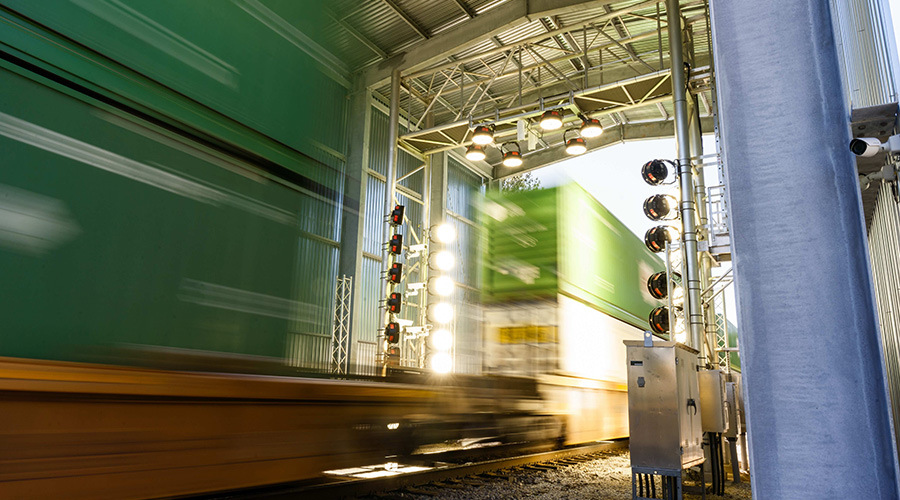CN: ‘DSR’ is the next stage of operational efficiency
2/25/2021
By Julie Sneider, Senior Associate Editor
CN Executive Vice President and Chief Financial Officer Ghislain Houle believes “digitized scheduled railroading,” or “DSR,” will become the rail industry’s next motto to describe the next phase of operational efficiency improvement.
During a Feb. 17 virtual presentation at the Citi 2021 Global Industrial Conference, Houle and CN President and Chief Executive Officer JJ Ruest gave an overview of the Class I’s efforts to drive technology deep into the organization. Their presentation included an update by Houle on two of CN’s top technology projects: the autonomous track inspection program (ATIP) and automated inspection portals. The projects use sophisticated sensors and artificial intelligence to improve track and train inspections.
“We are going from precision scheduled railroading [PSR] to digitized scheduled railroading,” said Houle. “First and foremost, this effort is about safety, with a byproduct of delivering more reliable service, and increasing efficiency and productivity.”
CN has been expanding its autonomous track inspection program in Canada and is phasing it in in the United States. The Class I has deployed eight first generation ATIP rail cars, which create a profile of track under inspection and provide a real-time geometry view so maintenance crews can perform needed repairs.
In 2020, the railroad used the technology to inspect 375,000 miles of track, with some key corridors receiving as much as 17 times more inspection than with previous inspection methods, Houle said.
“We covered 100% of our four mainlines and 90% of our GTMs,” Houle said.
Two ATIPs will be added to the existing fleet in the first quarter, which will help inspect some of the network’s important secondary routes, he said.
Also this year, the company will begin deploying the next generation of ATIP cars, which will include laser technology and imagery.
CN also is expanding its automated inspection portals, a sophisticated visualization system that provides real-time train inspection as trains travel through the portals at 60 mph. Using ultra-high definition panoramic cameras, a full 360-degree view of the train and the undercarriage is captured. The technology detects and locates defects on rail cars that need maintenance, then generates work orders for repairs.
So far, CN has seven first-generation portals installed — five in Canada and two in the United States — each with nine ultra-high definition cameras. The Class I plans to add 25 cameras to its portals for a total of 34 cameras per site.
The program is a major advancement in inspection frequency and the quality of train inspections, as more of the railroad’s algorithms come into service, CN officials say.
The ATIP and automated inspection programs not only improve safety by reducing the risk of accidents and injuries, they improve operational efficiency, which reduces costs, Houle said.
Ultimately, investing in such technology will help CN improve its operating ratio, which was an adjusted 61.9 for full-year 2020, he said.
“There are things that we learn as we deploy this,” said Houle. “At the end of the day, it will fundamentally change the way we operate. And it is starting to reflect itself in earnings, and it will reflect itself in the operating ratio.”
At CN’s 2019 Investor Day, company officials estimated automated inspection programs could save CN between $200 million and $400 million over the next three years. At the Feb. 17 conference, Houle said the savings will be close to $300 million.
Investing in automation technologies now will help CN “leapfrog” ahead of competitors that are currently implementing PSR — something CN did many years ago, Houle said.
“Automation will spread everywhere,” he said. “That’s why I refer to it as PSR going to DSR.”

